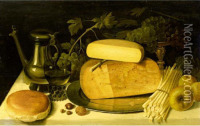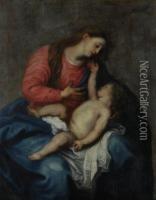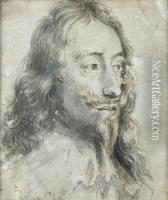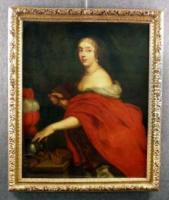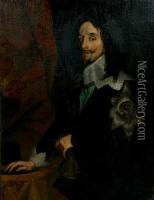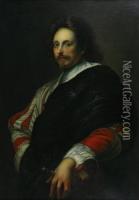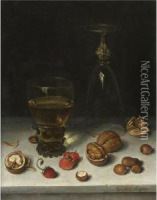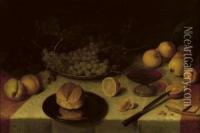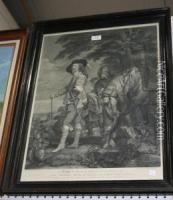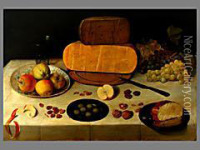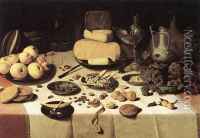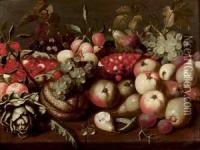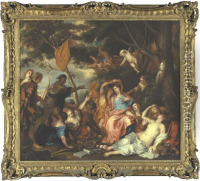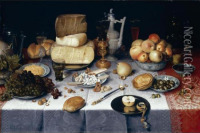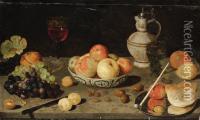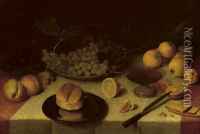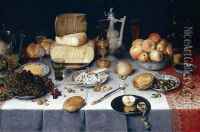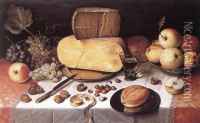Floris Claesz Van Dijck Paintings
Floris Claesz van Dijck, also known as Floris van Dijck or Floris Claesz. van Dyck, was a Dutch Golden Age still-life painter. Born in Delft, Netherlands, in 1575, van Dijck was a contemporary of the more famous still-life painters like Willem Claesz Heda and Pieter Claesz. He was known for his detailed and realistic depictions of table settings with food, which were popular subjects during the Dutch Golden Age. His paintings often included a variety of textures and surfaces, from the gleam of glassware to the tactility of lemons and breads.
Floris Claesz van Dijck initially received his artistic training in Haarlem, where he became a pupil of the influential Flemish painter Antoon Claessen. His early works were influenced by the Mannerist style, which was characterized by its complex composition and allegorical content. However, van Dijck later developed his own distinct style that focused more on naturalism and the representation of mundane subjects with great detail and vibrancy.
Around 1600, van Dijck became a member of the Haarlem Guild of St. Luke, an organization that was essential for artists of the time for gaining commissions and recognition. His work was well-received, and he became known for his ability to create texture and depth in his compositions, making his still-life paintings highly sought after. Van Dijck's works are characterized by their careful arrangement of objects, often set against a dark background, which helps to emphasize the vivid colors and light effects on the various surfaces.
Despite his success, not much is known about Floris Claesz van Dijck's personal life, except for the fact that he spent most of his career in Haarlem and was active in the local art scene. He died in Haarlem in 1651, leaving behind a body of work that continues to be admired for its craftsmanship and beauty. His paintings can be found in various museums around the world, contributing to the understanding and appreciation of Dutch Golden Age still-life painting.
